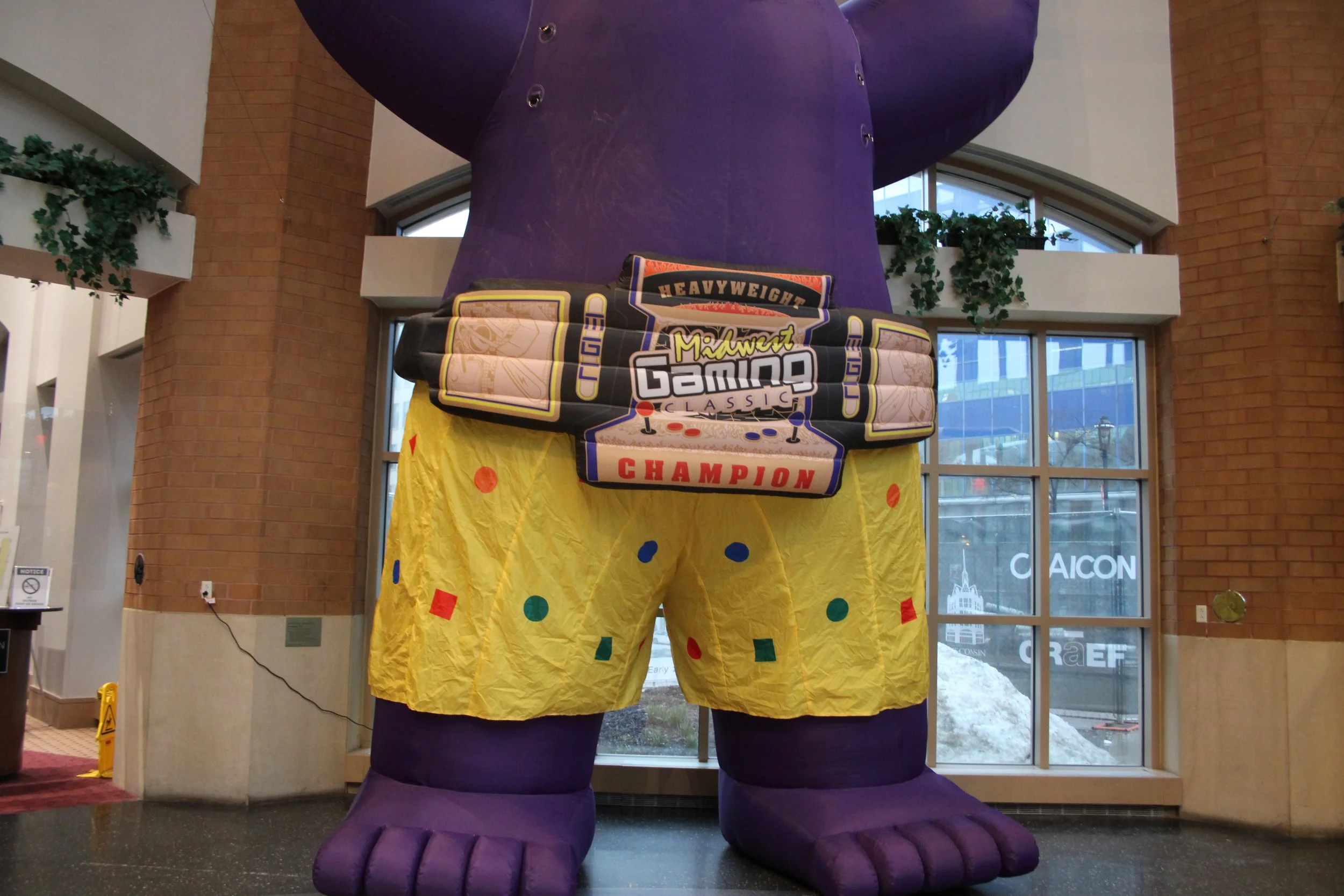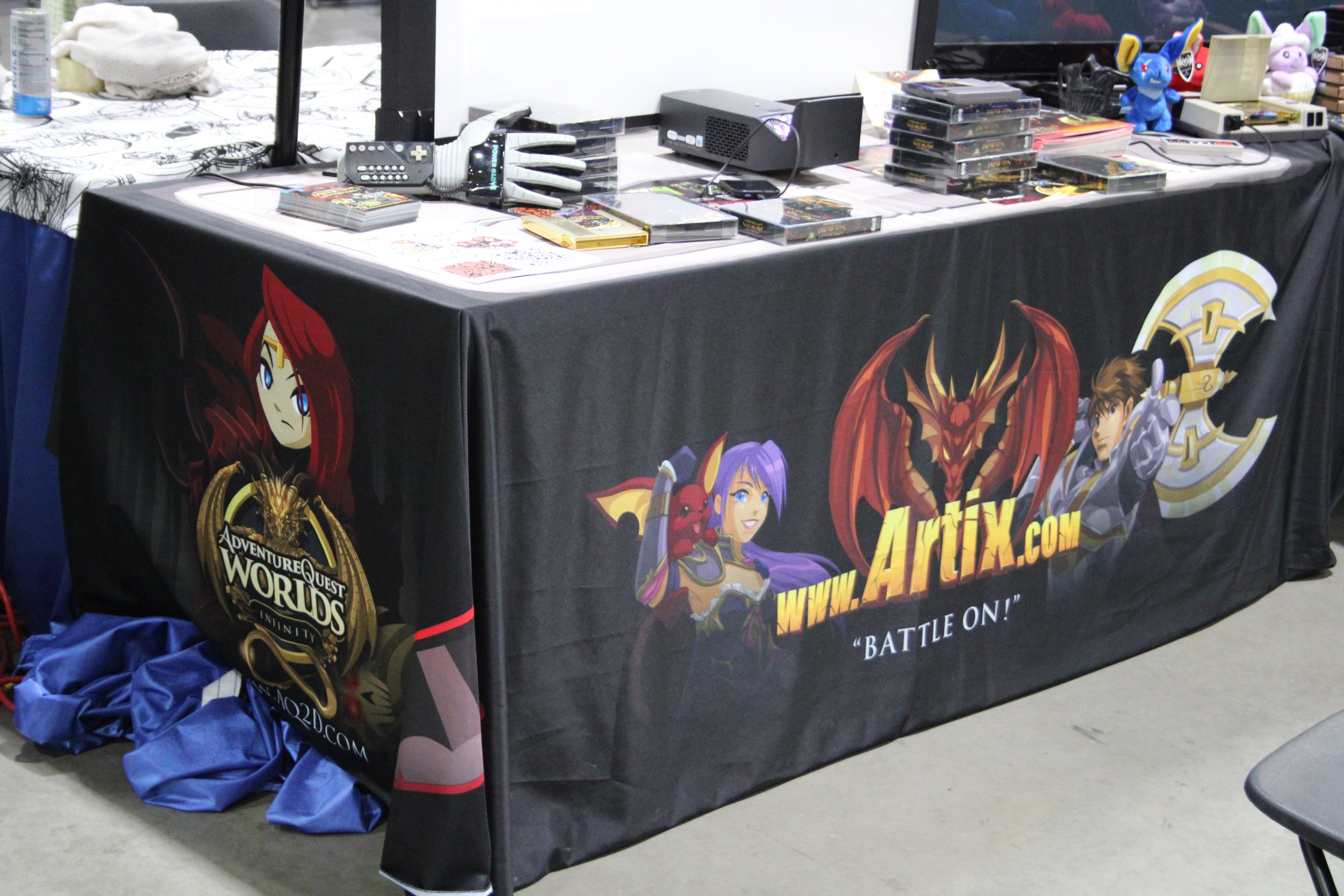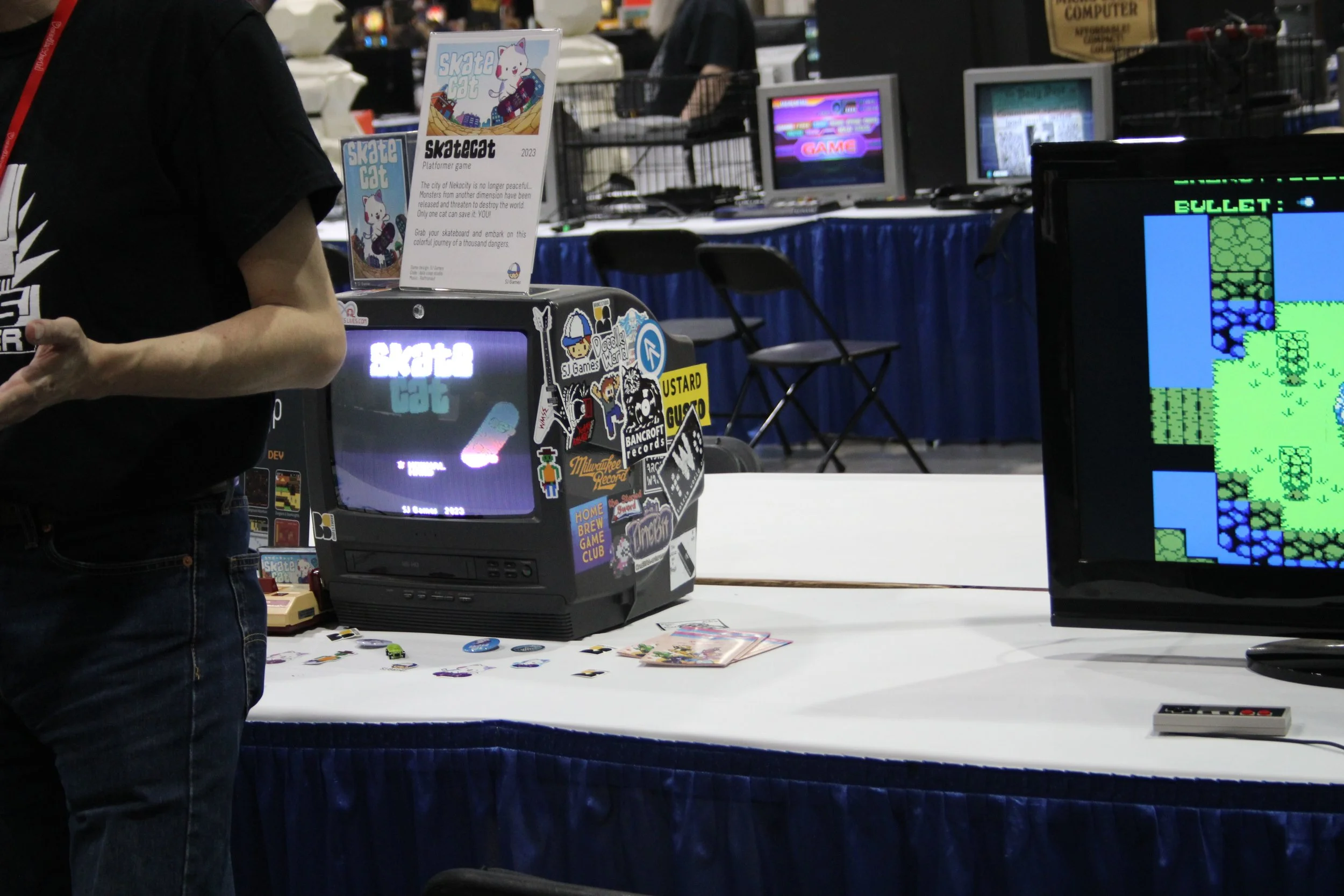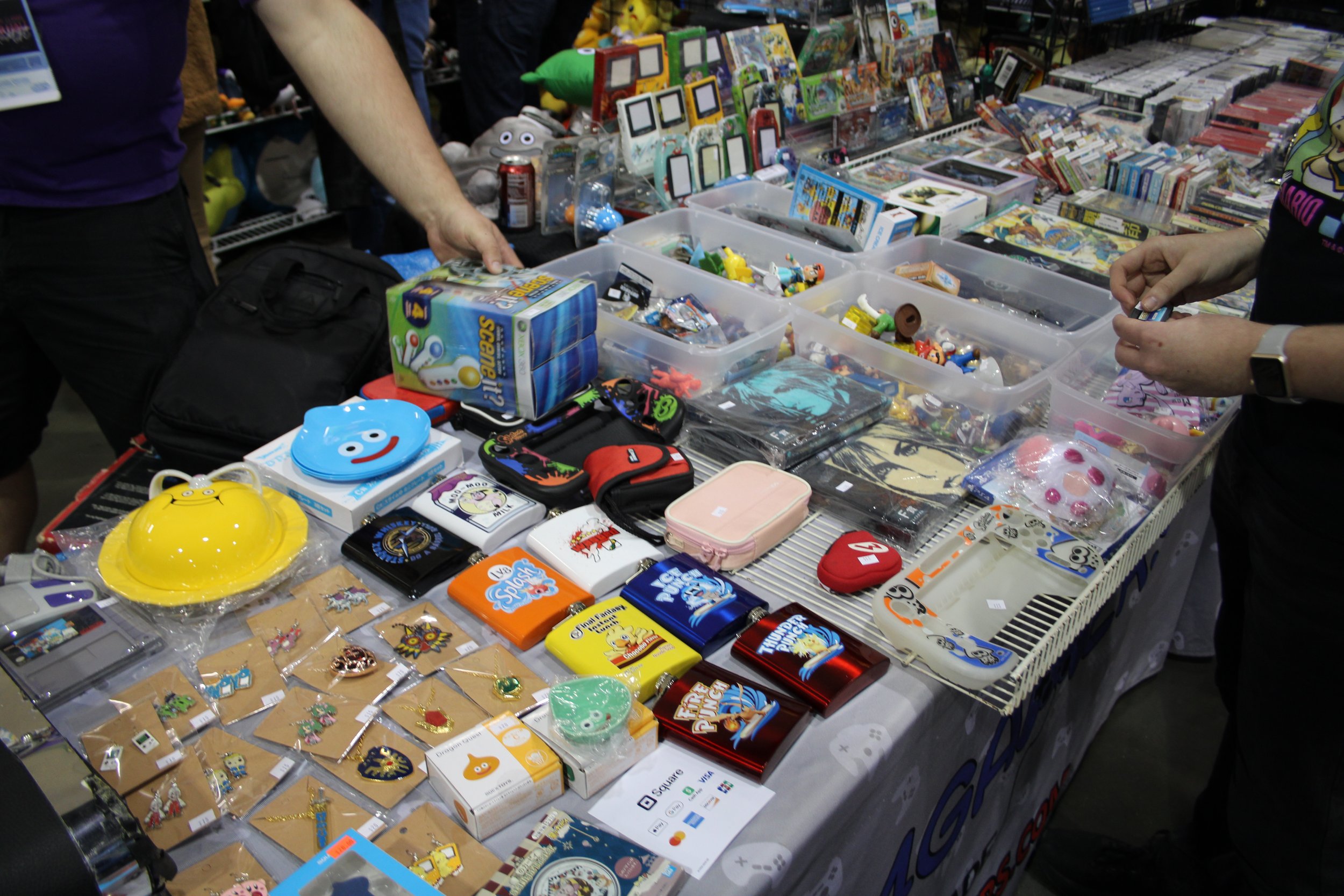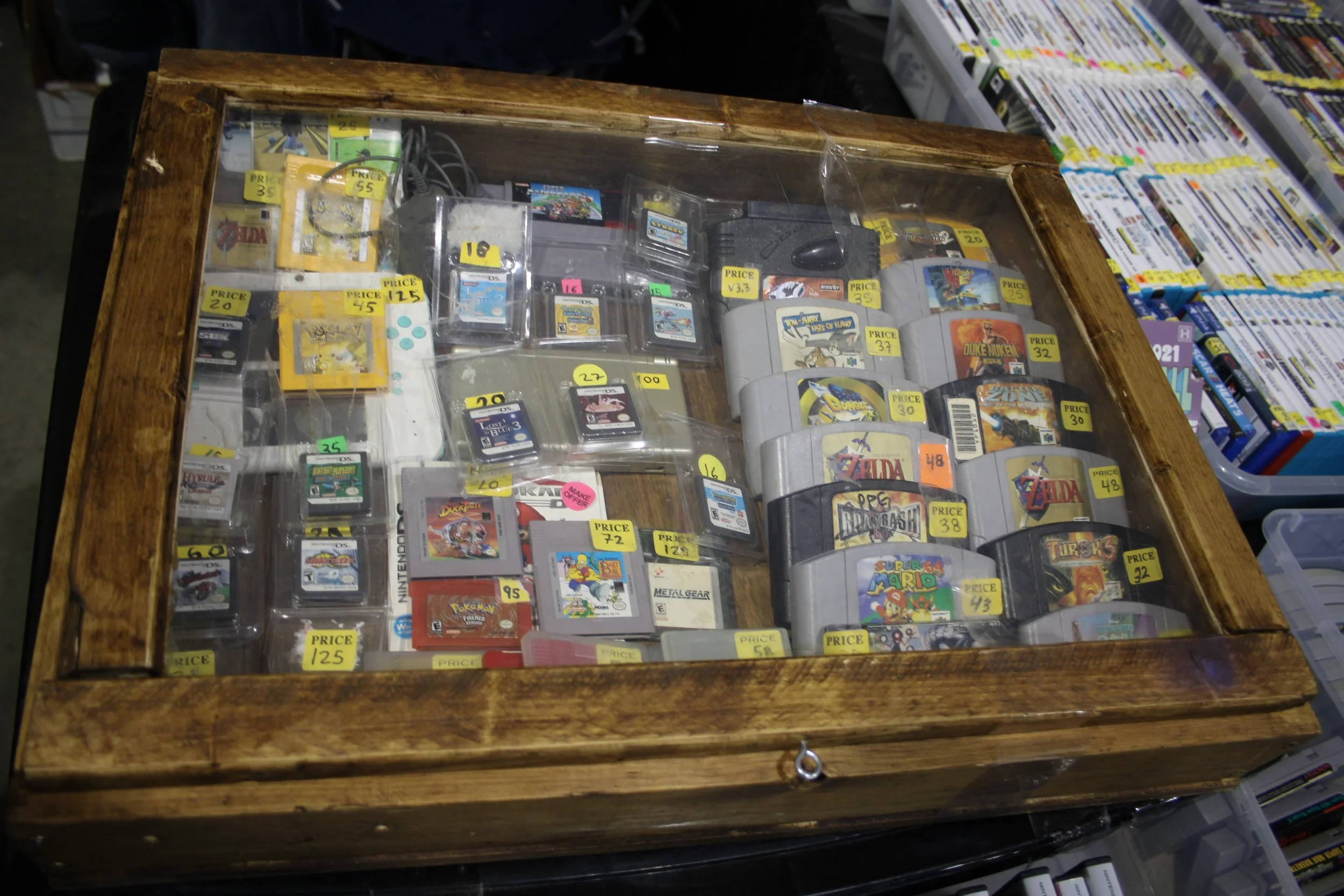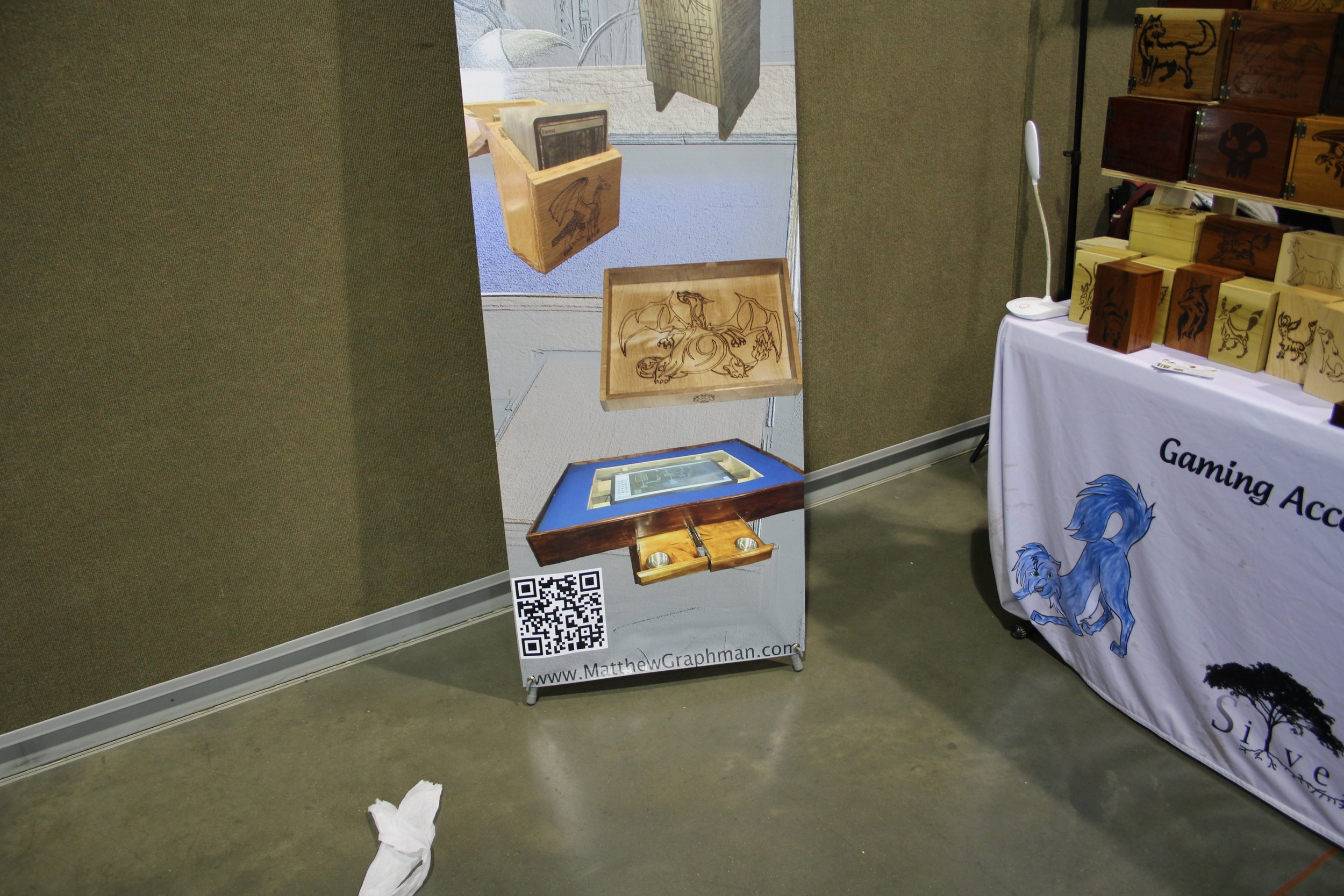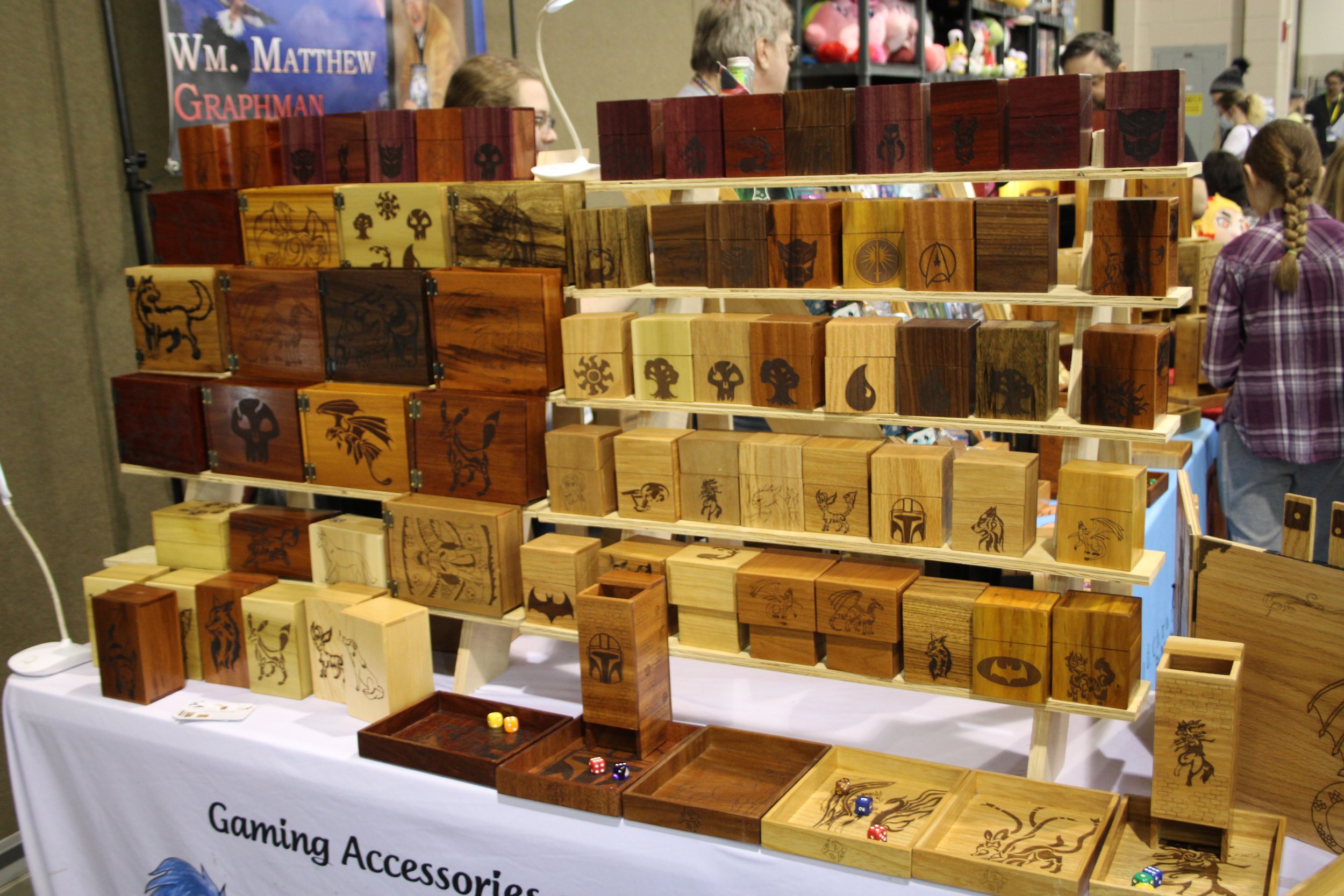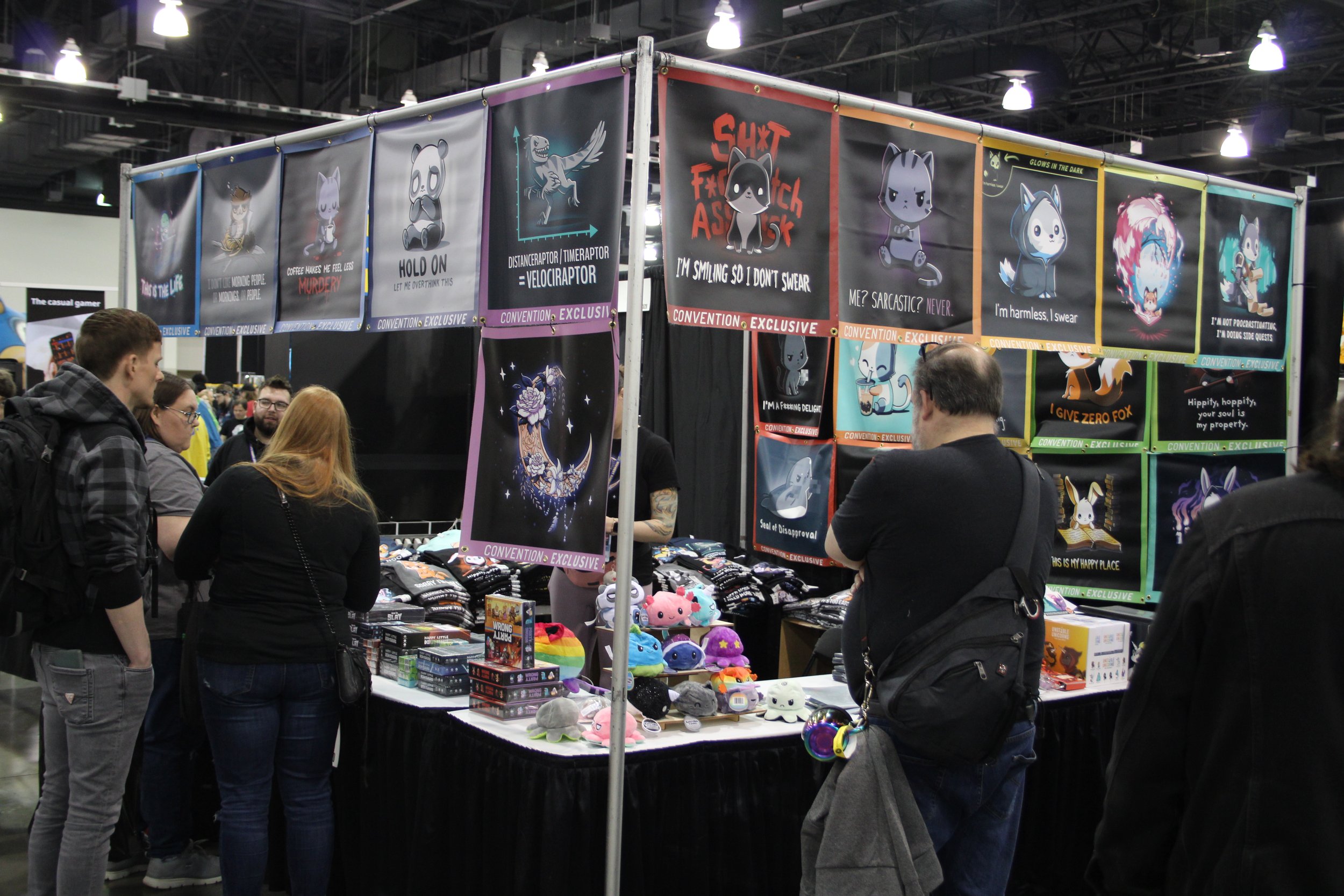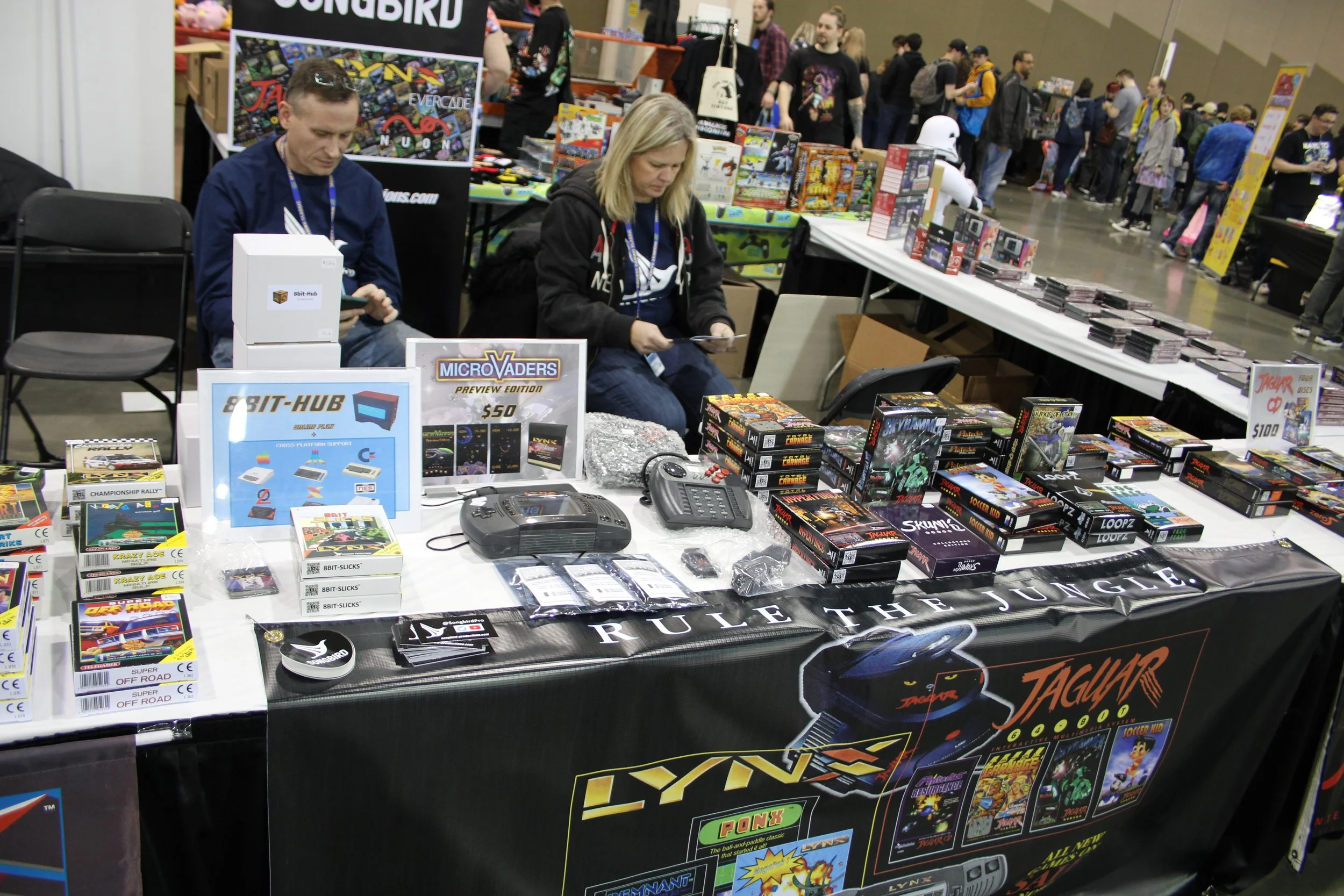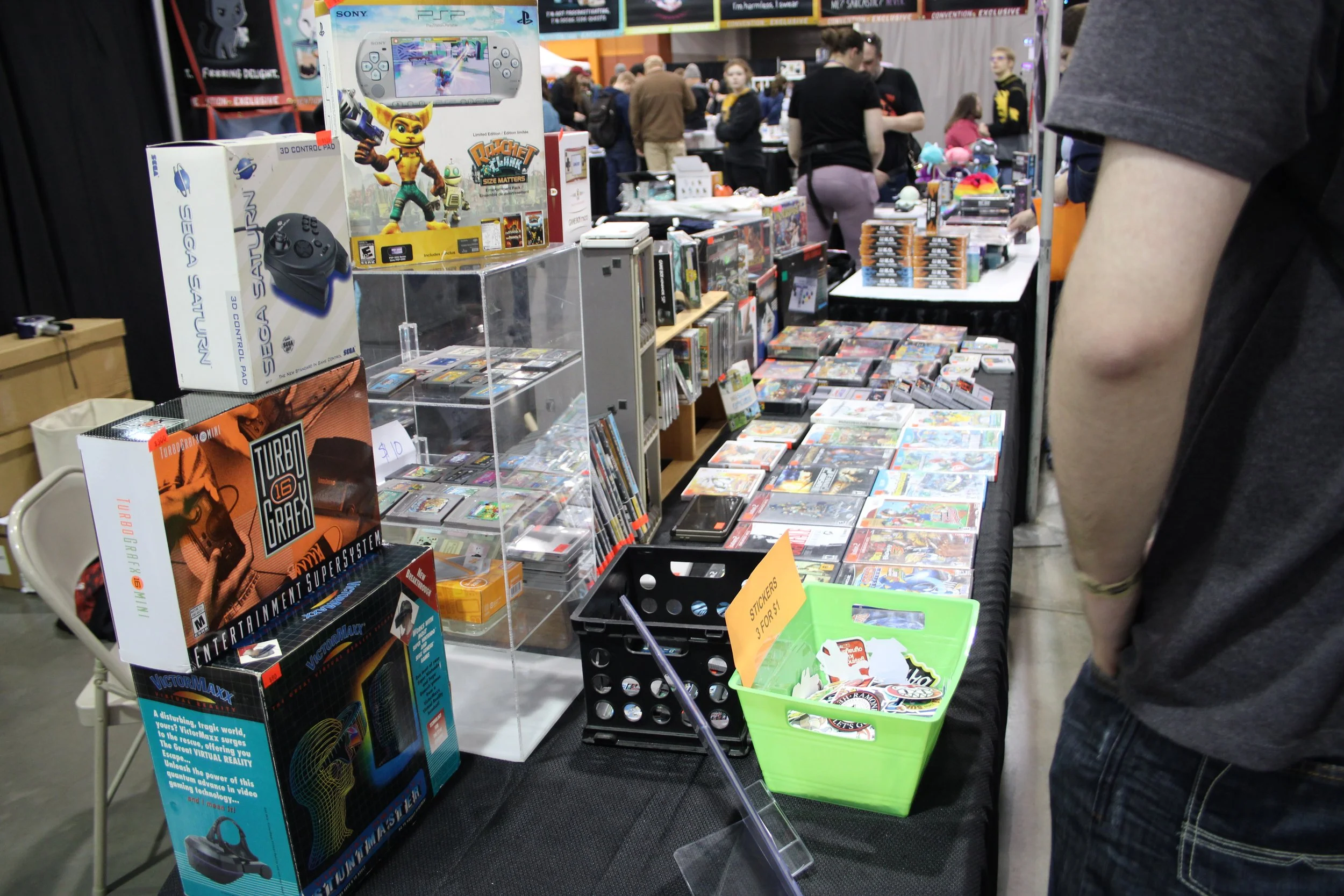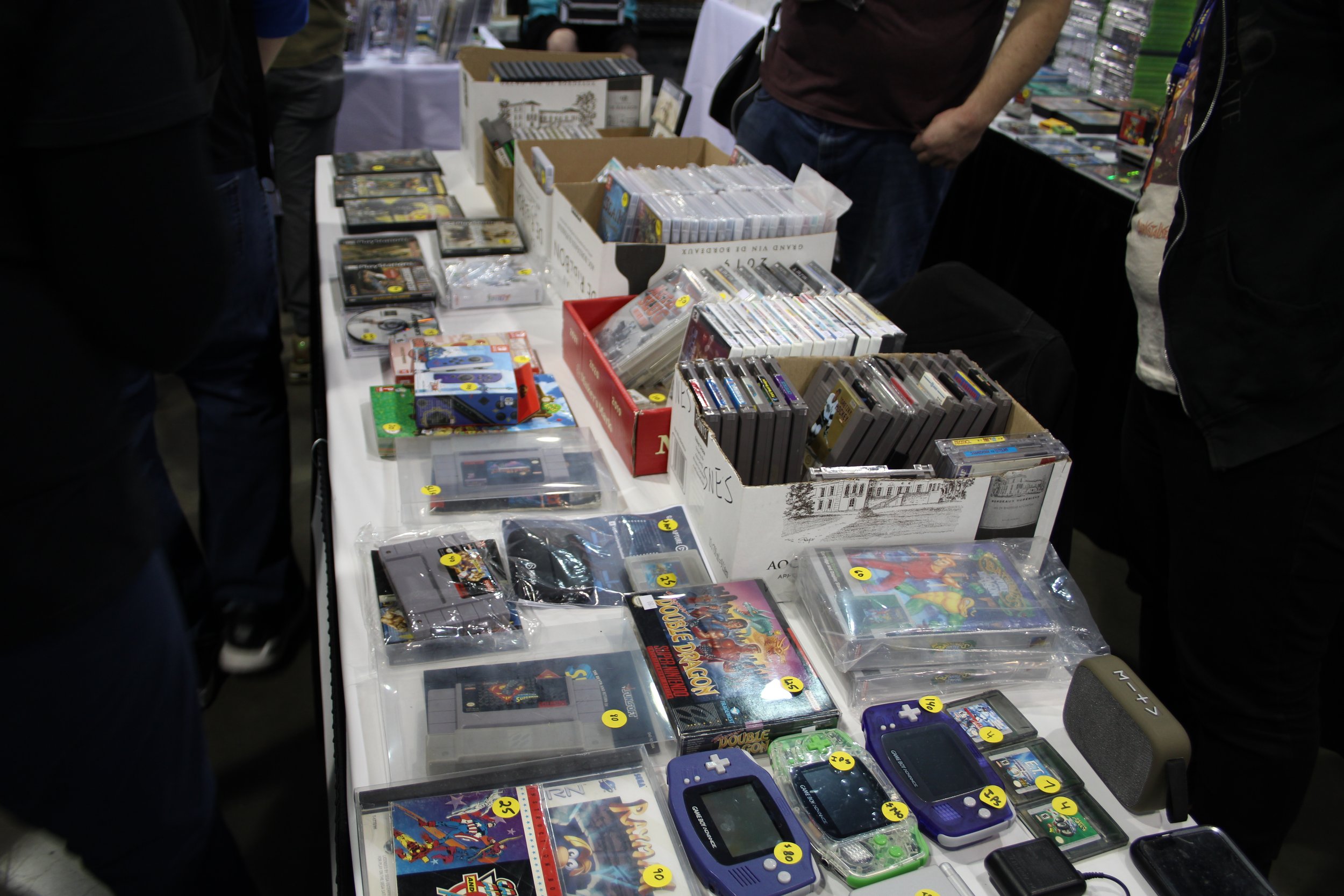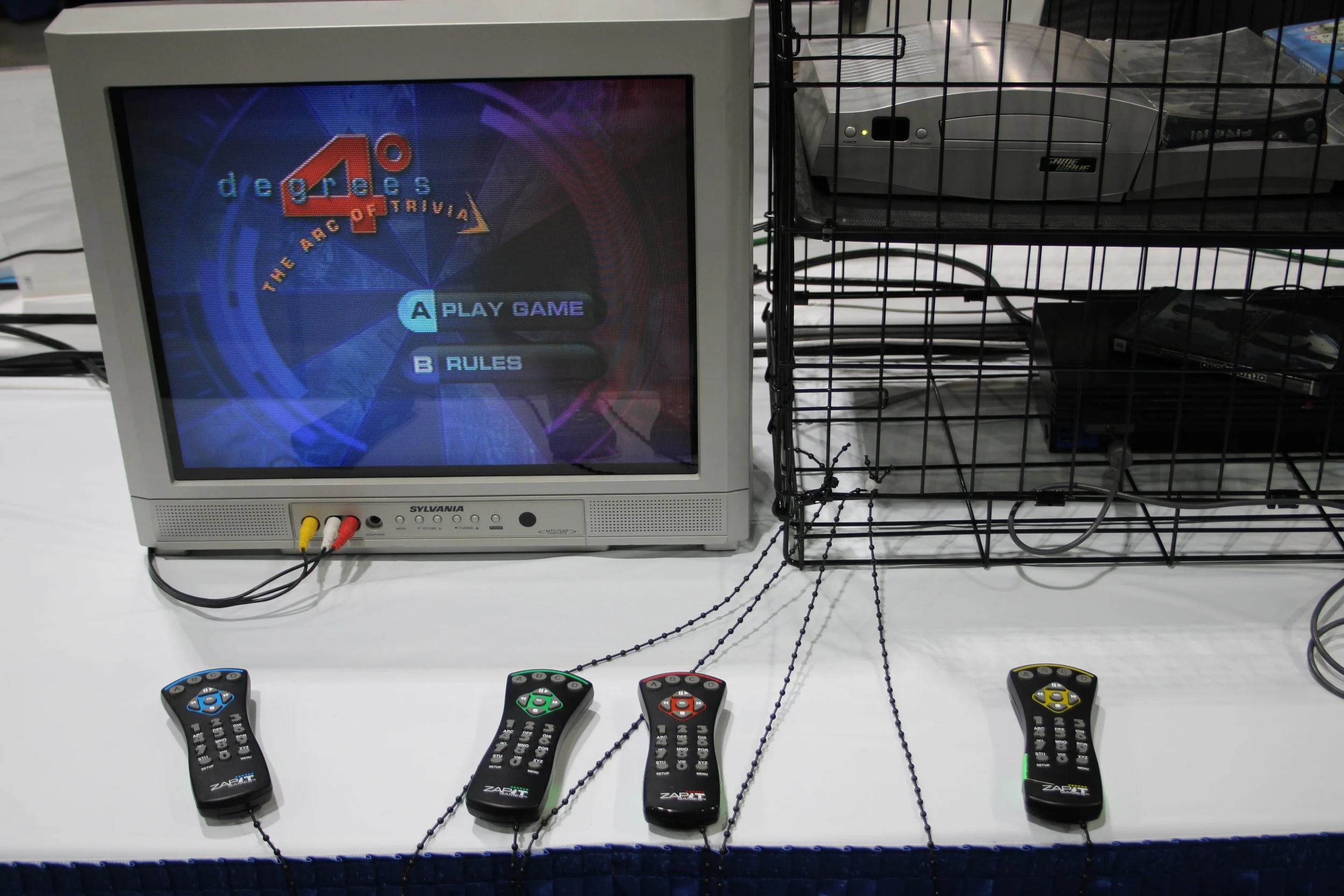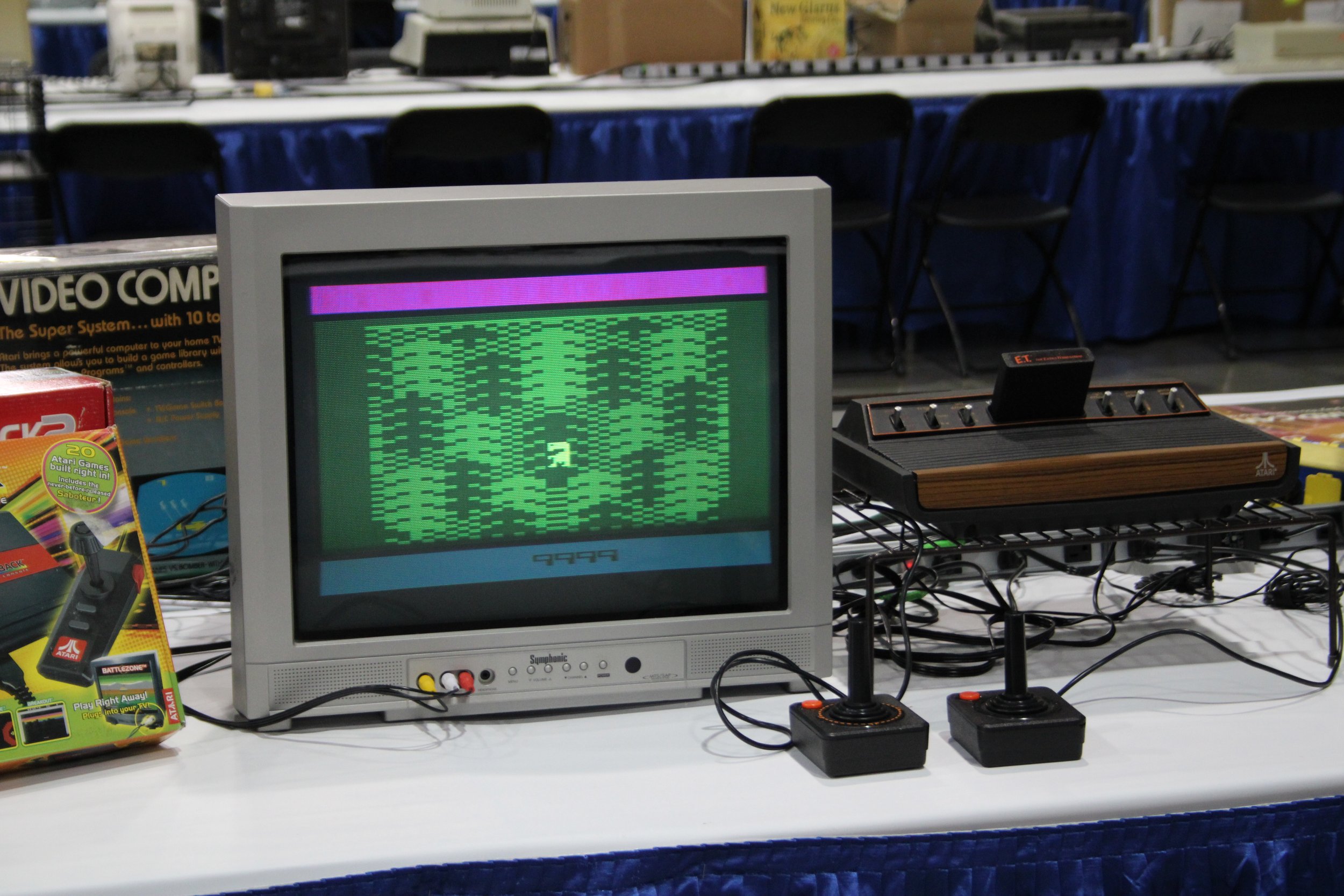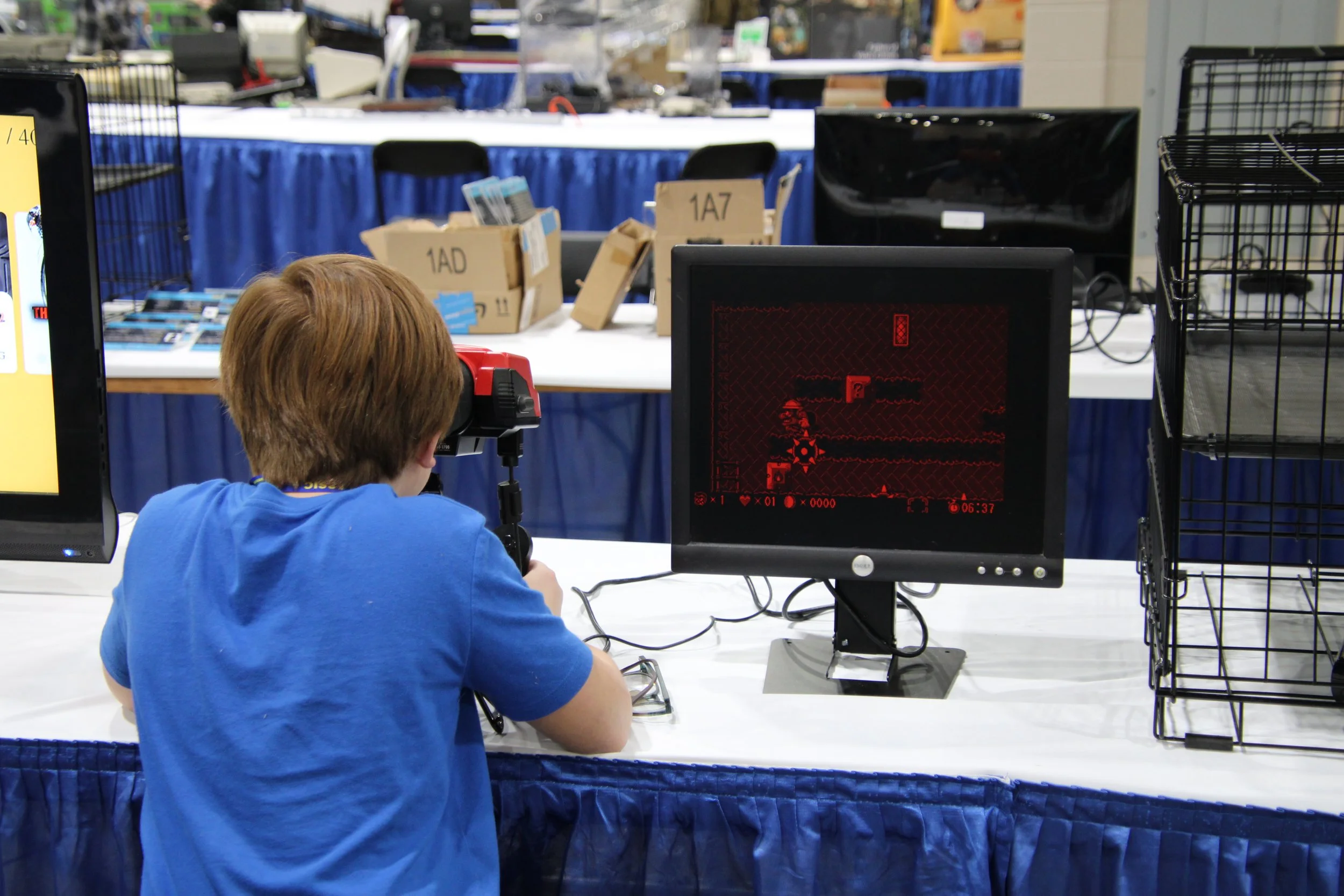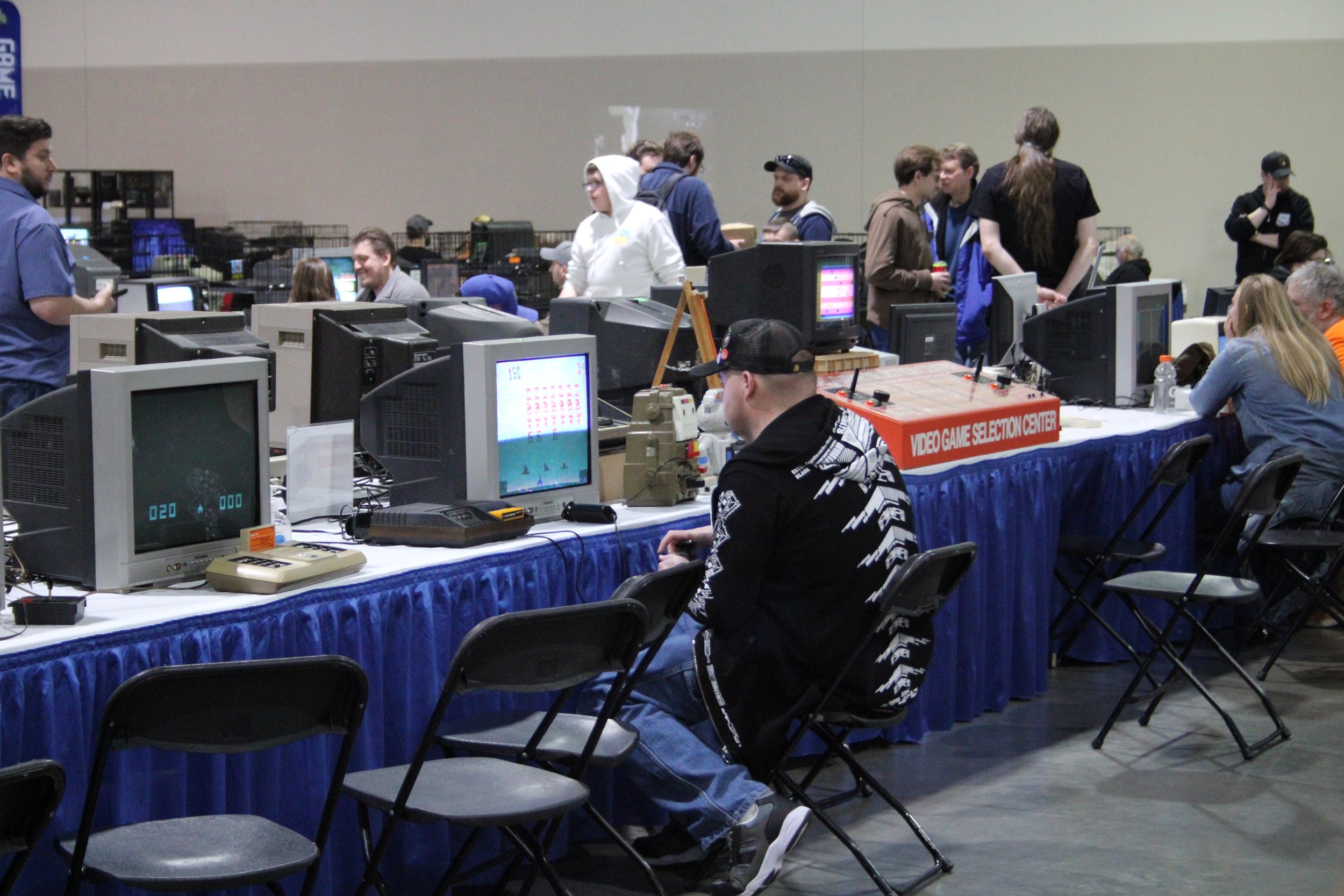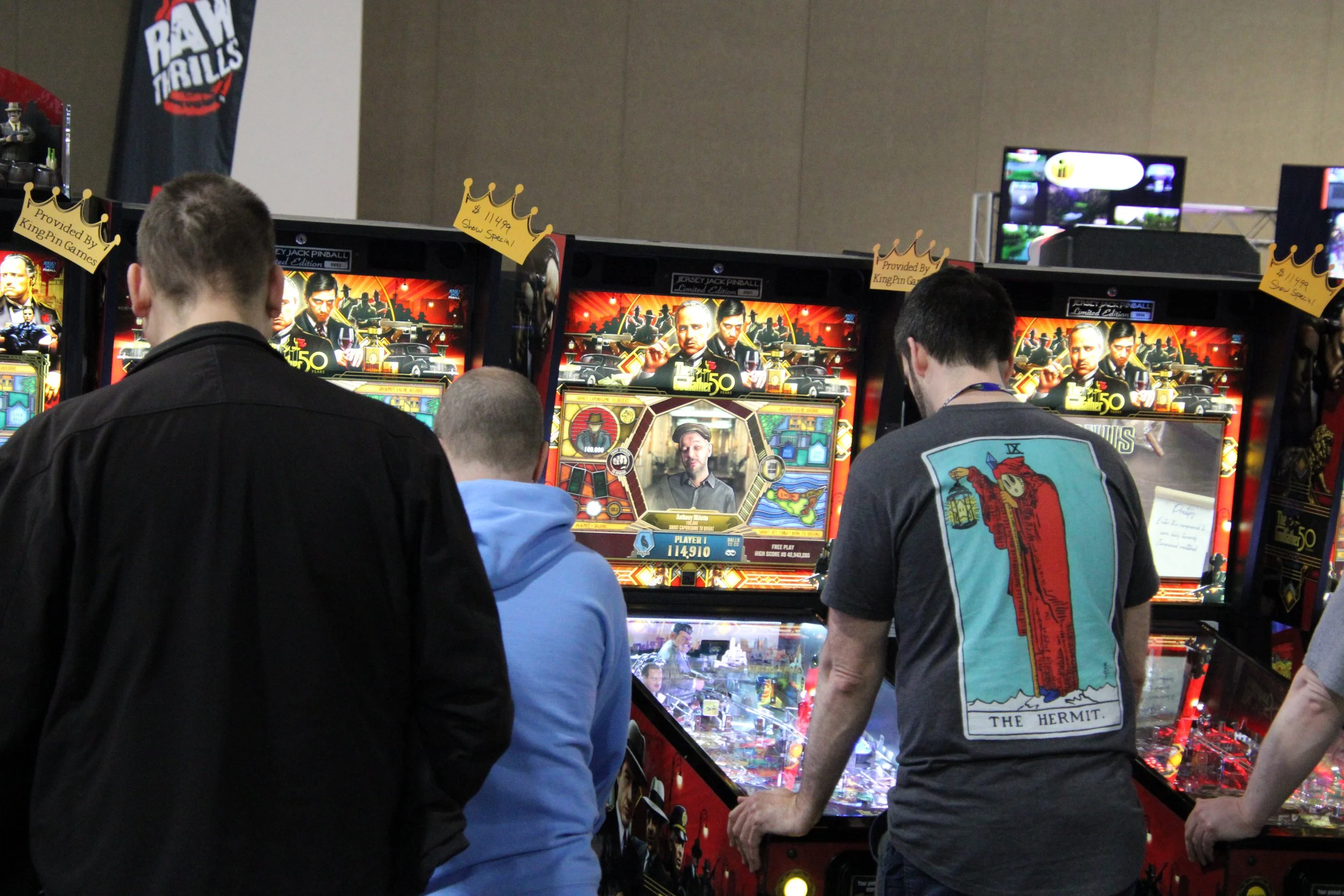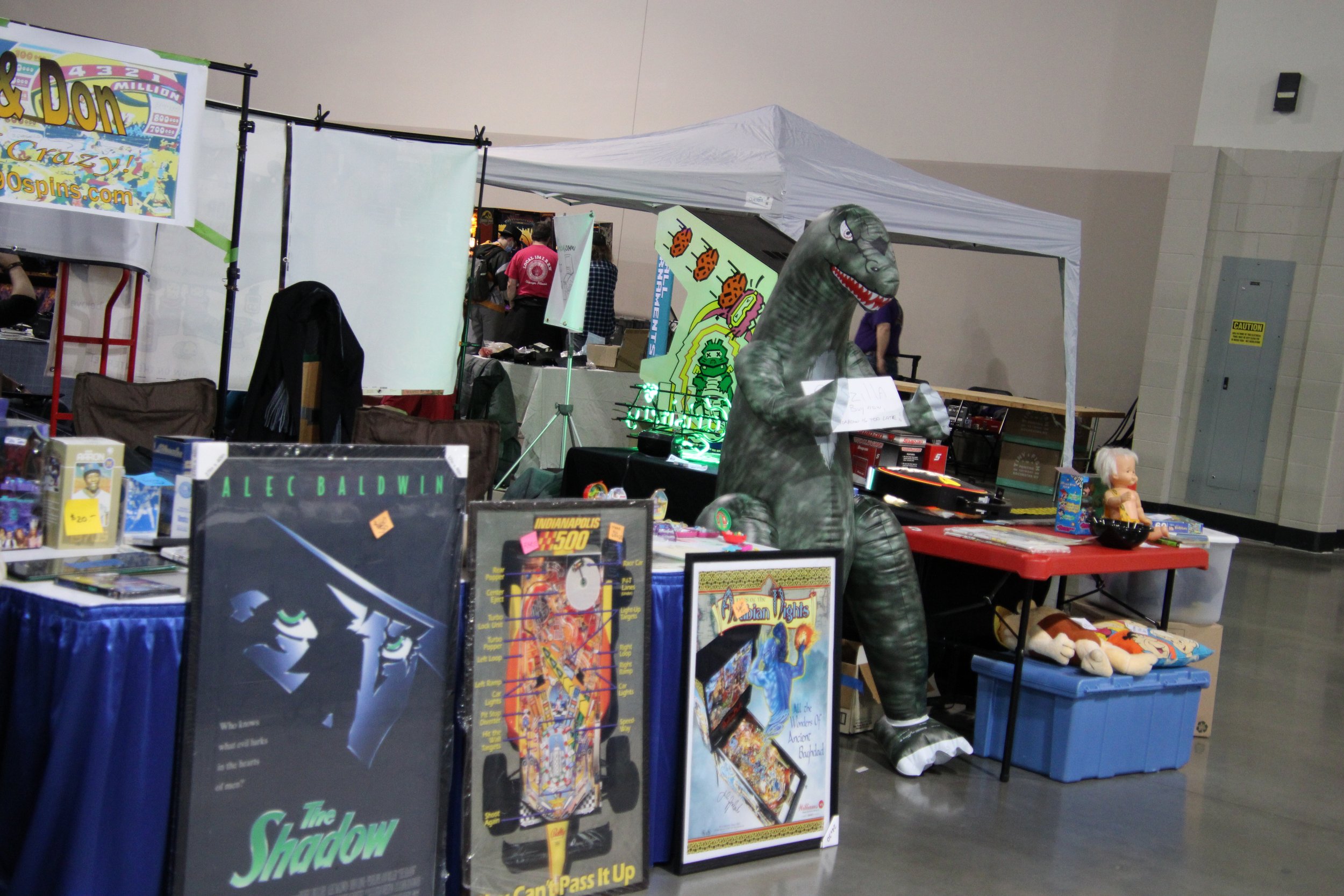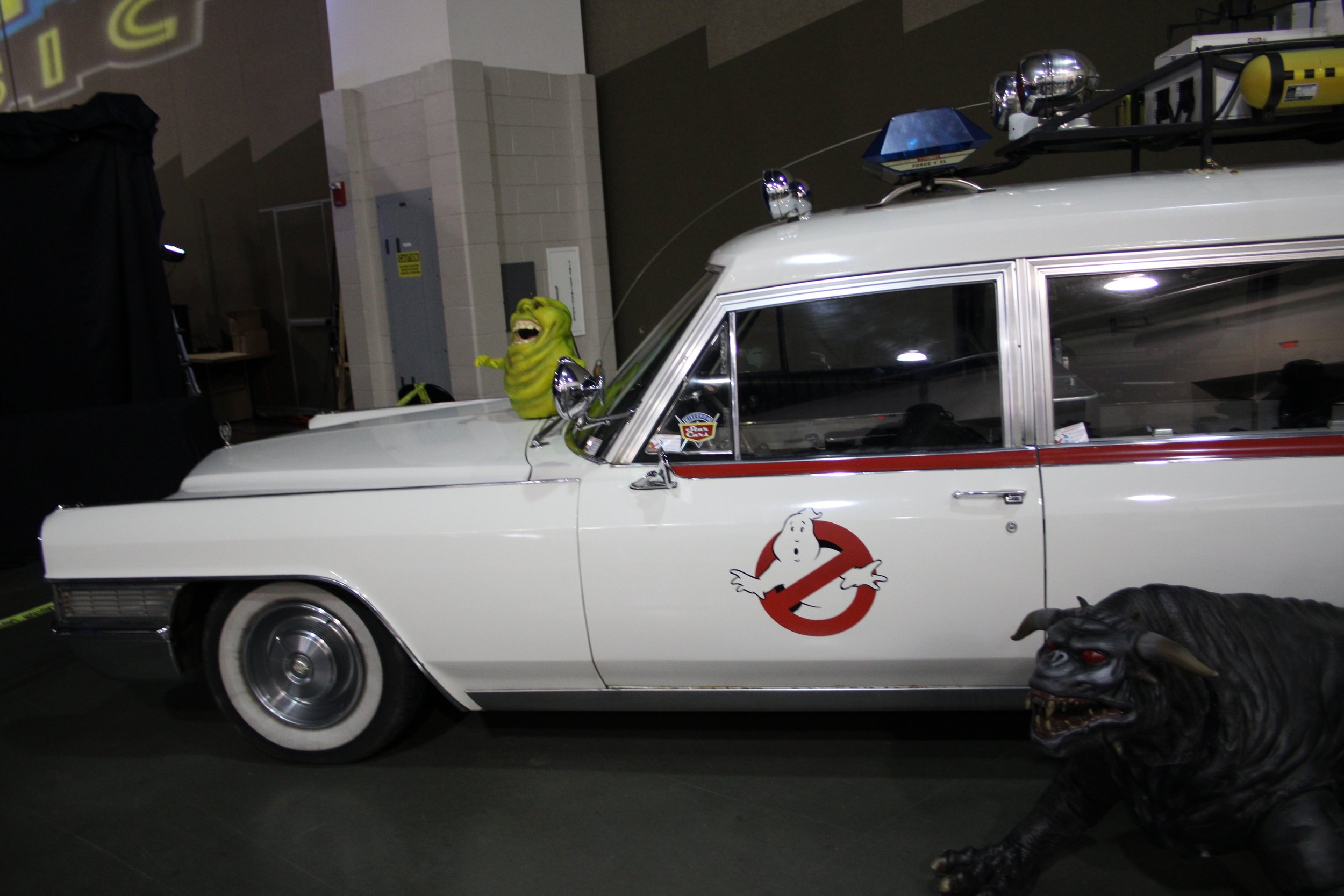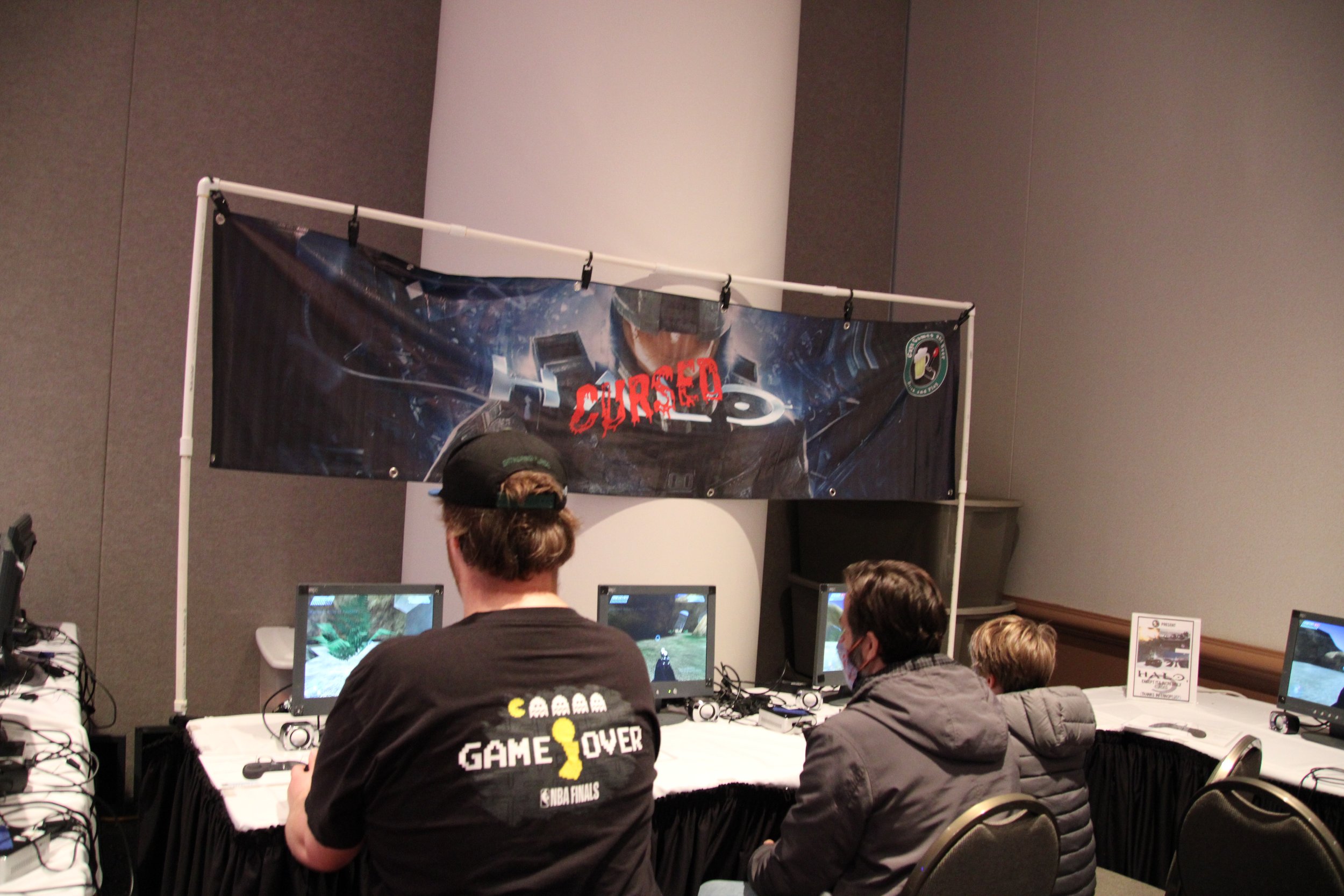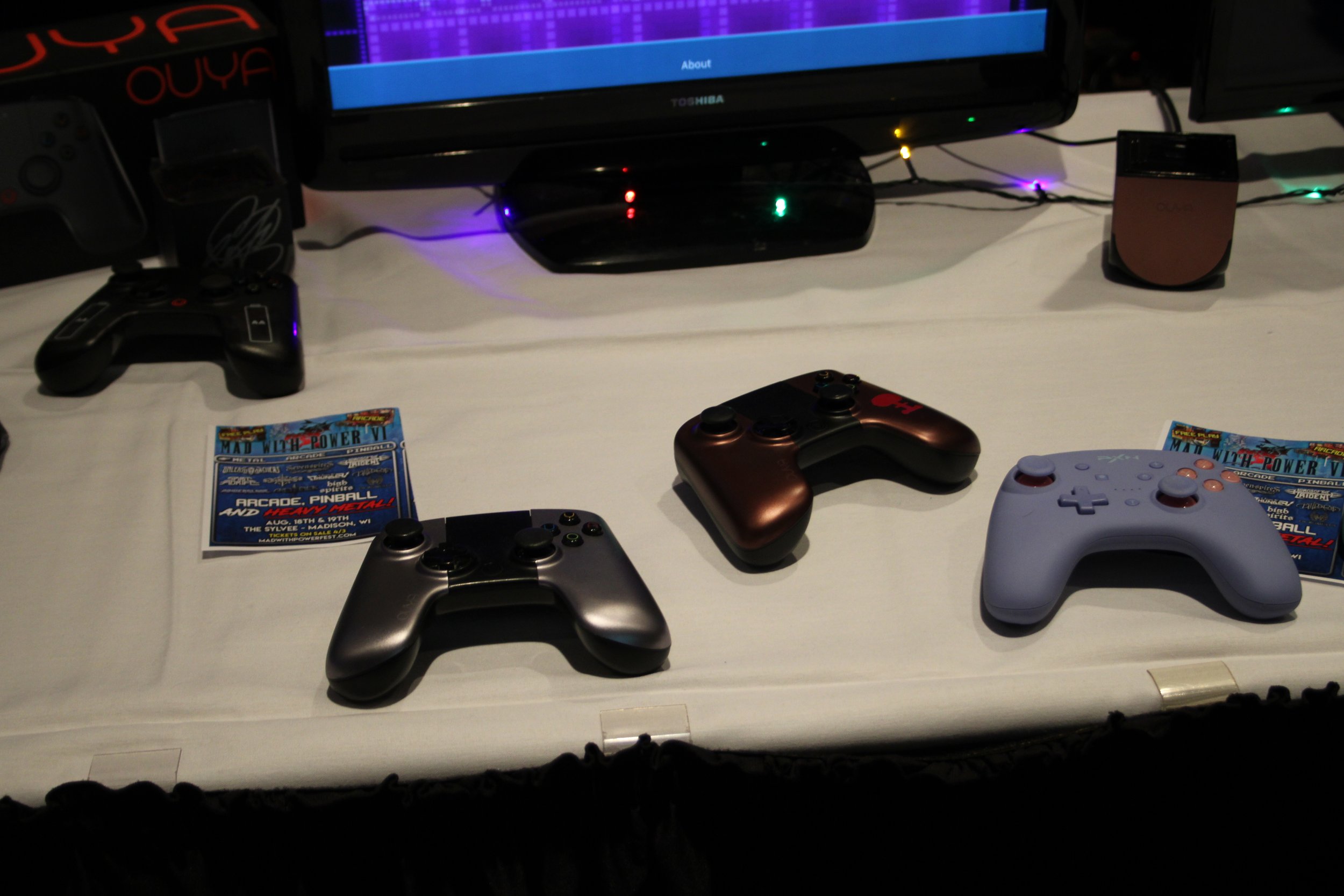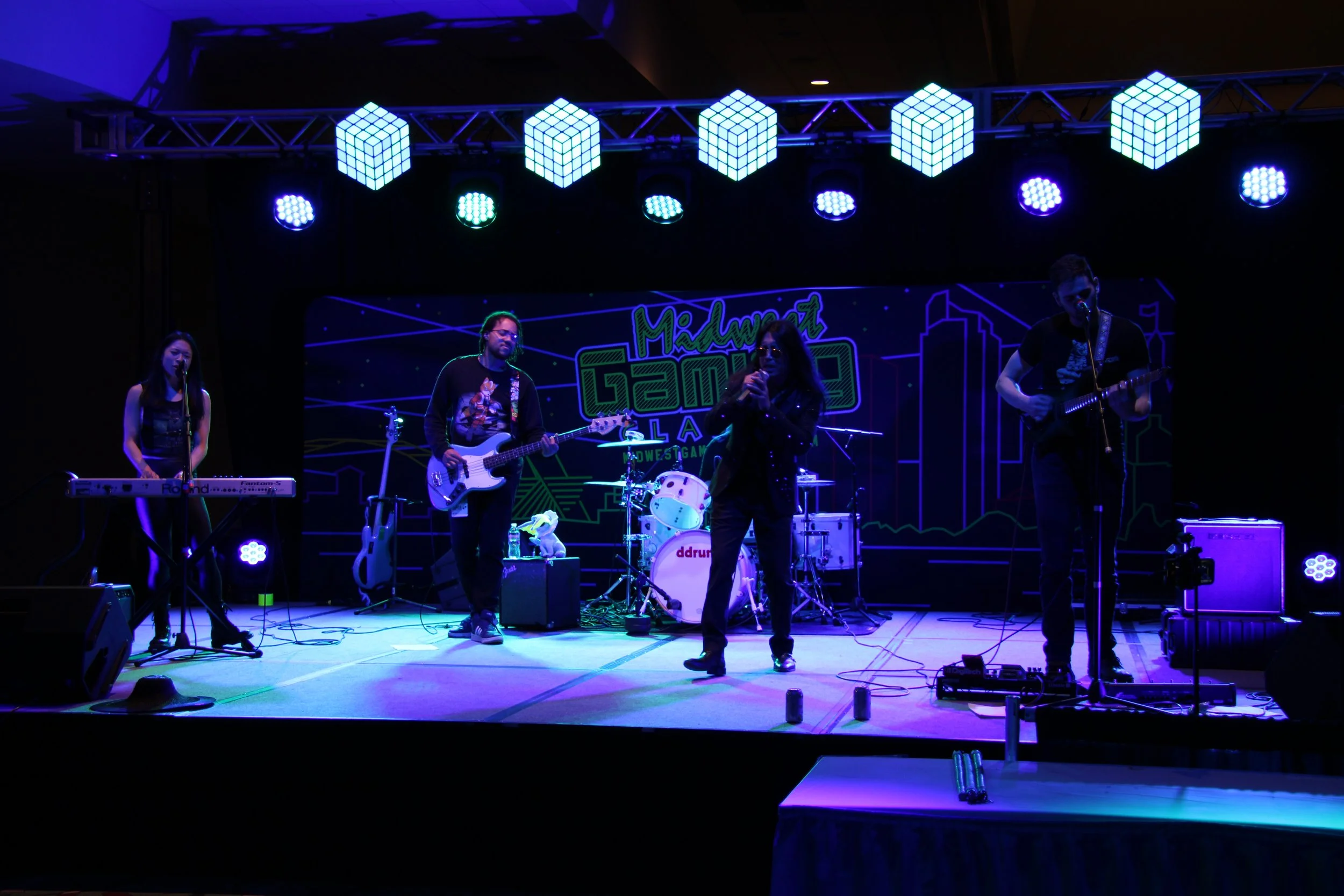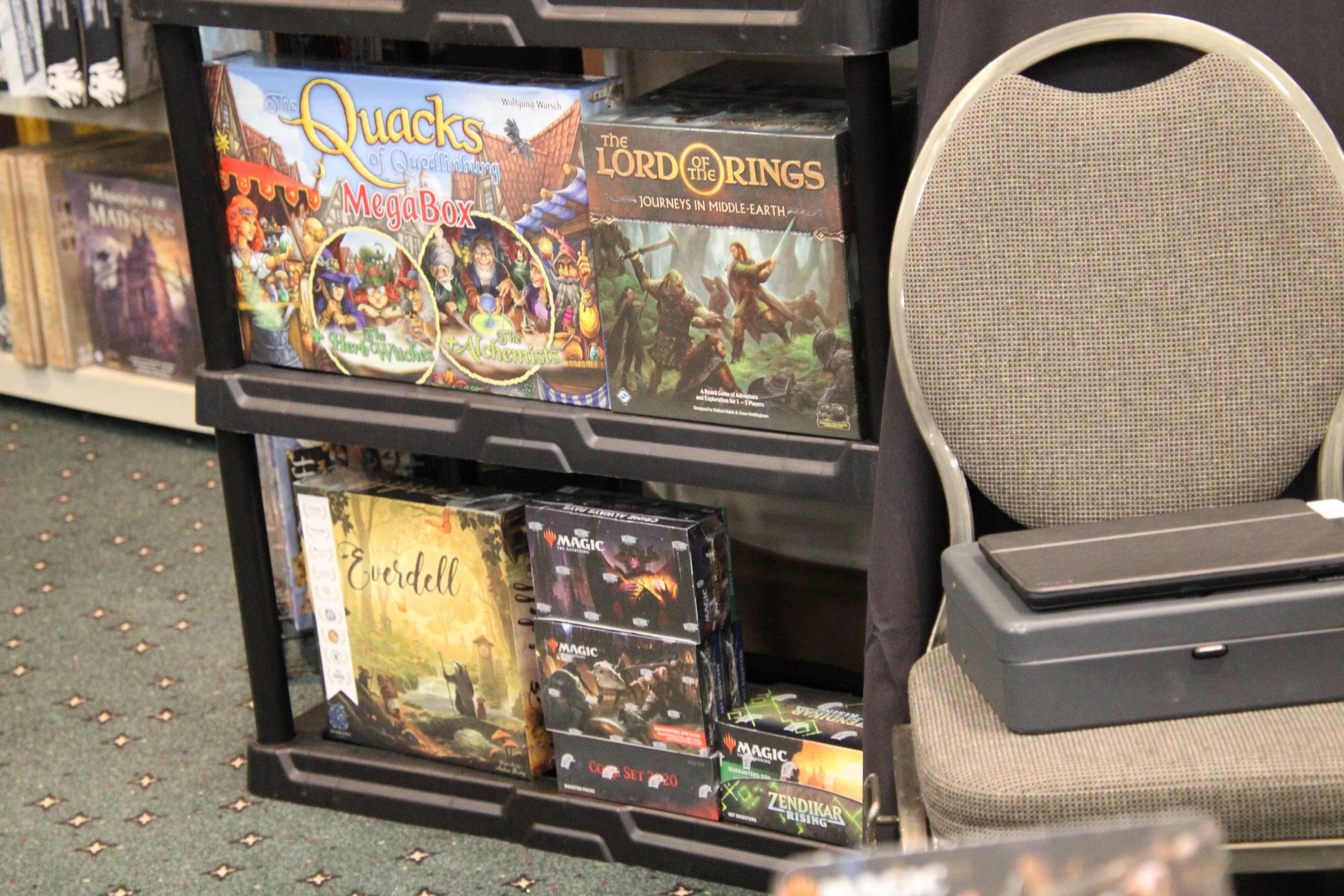My Yearly Trip to the Midwest Gaming Classic
As I stated when I wrote about Anime Milwaukee (AMKE), another convention I go to is a video game convention called the “Midwest Gaming Classic” (MGC). Even though I enjoy video games more than I do anime, I haven’t gone to MGC as often as I wanted. If my memory is correct, I started going to this event around two or three years after I started attending AMKE. I also haven’t done any volunteer of staff related work for MGC in any capacity.
What I find unusual about MGC is that the general public is only able to attend on Saturday and Sunday. Friday (more specifically, Friday evening) is reserved for people who purchased the VIP equivalent entry badge. Not only do VIPs enter the convention one night early, but they are also granted entry into an afterparty on Saturday night. Bare in mind, the person who owns the badge must be over the age of 18.
Much like my trip to AMKE, it is important to understand that I didn’t attend every event the convention had to offer. I only captured what grabbed my attention, and there is likely something that I missed during my time there, such as a question an answer panel with actors from the original Mortal Kombat video game. But I did take pictures of everything I could, and I want to share the best of the best with all of you. Now with that out of the way, let us begin!
Rather than showing you my usual two favorite rooms in the entire convention, I thought I would start by showcasing the various people working on projects of their own. I started by looking in the Artist Alley (for people from other industries to show their talent), where I met a man who was making literature in the style of the Twilight Zone or Tales from the Crypt. Normally I don’t gravitate towards literary arts, but we started talking about what the both of us are doing with our projects, and we exchanged business information. While I didn’t post pictures here, there were also artists who worked on television shows like Animaniacs, as well as the artwork shown on the sides of arcade cabinets (like Mortal Kombat). As I was looking through the photographs to post for my first bit of text, I realized that instead of showcasing a small amount of photos for original artwork, I should include original works not just for novels, but for interactive art as well (I do, as well as thousands, if not hundreds of thousands of gamers, consider video games to be a form of art worthy of being displayed in museums).
I should note that the original games that I am showing you are designed to be played on an original Nintendo Entertainment System (NES), or at the very least, a retro style console made by a third party that can play not just NES games, but Super NES (SNES) games, Sega Genesis (or Megadrive if you live outside of the US), and their Japanese equivalents. The photos that display a small cube shaped object, however, is a game that is using a projector to be displayed onto a physical book for the player to interact with. This is one of the many applications that Augmented Reality is capable of.
There are several pictures focused on a game called “Dungeons and Doomknights” because of who created it: the game is made from the creators of a free-to-play RPG called “Adventure Quest”. This is relevant because this game has been updated since the early 2000’s. I remember playing it very briefly one day durring my college years, but it didn’t grab my attention at all. Still, for that game to still be around and have a dedicated fanbase after all this time, is quite a feat in its own right.
With this selection I present everything in the vendors hall that grabbed my attention. As you can tell, there were many vendors offering modern and vintage video games; so many, in fact, that they often blurred together when I try to recall who is who. That is not to say that every one of the is the same; some offered just games, another offered games and systems, another offered games and systems from other countries, old gaming computers, controllers, trading cards, and so much more! If you look closely in some of my photos, there are some games in glass cases that are so rare (and in some cases, like Rule of Rose, controversial) that the prices of these games (even second hand/pre-owned) can go as high as 200, 300, or even 800 dollars! Almost one full GRAND for a single copy of a video game that was released almost 20 years ago!
Oddly enough, there were over-sized replicas of game cartridges made with a 3D printer that can be hung on a persons wall. There were also prop weapons from popular media for people to use decoratively or as part of ones costume. There were empty boxes from game systems that have long since been out of production that went for several hundred dollars (yes, you read that correctly, the EMPTY BOX for an older game system had that high of a price tag). There were games for the Nintendo Famicom (Family Computer, basically the Japanese version of the NES we had here in the U.S.A.) that were translated by fans into English and placed onto third party reproduction cartridges. There were people selling Mods (fan made physical components that provide modifications to game consoles) that allow them to be used with modern hardware (more on Modding later on).
Of course, there are rare cards for card games you buy; from Magic the Gathering, to Pokémon, the Yu-Gi-Oh! There are also products you can buy for any dice-based tabletop roleplaying games that you might find useful. There was also a section of the hall dedicated to a company called “Premium Edition Games”. This company releases new games that feature retro-NES graphics, with an emphasis on selling PHYSICAL COPIES of these games! Not to mention, depending on which edition of a game you buy from them, the packaging can come with an instruction manual, and small walkthrough pamphlet if you are stuck in an area of the game you are playing, and other physical goodies! Given how many people download their games from a digital storefront (this includes me, but only when there is no alternative) to companies that push game streaming services that utilize cloud technology (like the failed Google Stadia, and the wildly successful Xbox Game Pass), this is something I want to support as best as I can.
Here we have what I consider to be the primary “Game Room”. I say primary because while there were several rooms where attendees could play games, the one in these pictures was the largest and most open, providing the greatest variety of games to play, both video and pinball alike. It is here that we can find almost any game system or game oriented computer ever released in North America, as well as some that were only available internationally. The video games that could be played ranged from all-time classics like the Super Mario Brothers, to more involved game like Guitar Hero, to motion controlled games like Wii Sports, to ones that I don’t remember hearing about before. The systems ranged from all time greats like the Atari 2600, to commercial and critical flops like the 3DO Interactive Multiplayer, to ambitious crowdfunded failures like the OUYA (more on that later). Games had genres ranging from platformers to shooters, racing, sports, rhythm and music, one-on-one fighting, and genres I can’t identify easily. One especially strong point was the variety of arcade cabinets the were not only playable by attendees, but were being auctioned off. The cabinets in question had racing games (like Cruisin’ USA, Hydro Thunder), one-on-one fighting games (Street Fighter vs X-Men, Soul Caliber, older Mortal Kombat games), and Rail Shooters (not necessarily the official title of the genre, but the kind of game where you hold a large plastic fire arm in front of the screen while all in-game movement is done by the game itself; all the player would do is pull the trigger on the plastic gun to eliminate hostiles), just to name some of the genres.
While I use the word “genre” quite liberally when describing the kinds of video games one can play, I don’t think genre applies to pinball machines the same way. Pinball machines may feature the likeness of a subject like rock bands (there were Iron Maiden and Foo Fighters themed machines), licensed movies (like various movies in the Marvel Cinematic Universe and older James Bond films), and even licensed video games (like the classic series Castlevania and the surprise indie phenomenon Undertale); but, at the end of the day, the are all essentially the same kind of cabinet with the same goal: earn as much points as possible by hitting the buttons to make the flippers move inside the machine to hit a metal ball in a specific direction. To clarify, I do not mean to say that this makes pinball machines bad; just that there does not seem to be much variety in what the goals are.
I would also like to point out that there were vendors in this area that sold replacement parts for pinball machines. Many of these machines were also for sale and/or auction. Not only that, but there were several sections of a table that acted as a tribute to a man named Ralph Baer, often referred to as the Father of Video Gaming. This man coined the term “Video Game” when he released the Magnavox Odyssey (more on that later), and went on to make several other products (like Simon) up until his passing in 2014. I must admit, I don’t recall much of this mans history prior to the release of the Odyssey, but he did immigrate to the United States in 1938.
I also want to show that while this event was focused on gaming, there were automobiles from famous movies and television shows on display. I don’t know why they were here, but is was nice to see them anyway.
This second dedicated game room is mostly filled with arcade cabinets brought in from a business called “Garcade”, located in Menomonee Falls, WI. This business provides all day unlimited play of all arcade cabinets at their disposal for a small fee. Much the larger game room, this one also contains arcade cabinets from the era of the original Mortal Kombat and earlier. That is not all that was in here, however; other groups had set up specialty sections dedicated to a specific type of game, games that were modified in some capacity, and a selection of vintage game consoles.
Firstly, we have multiple set ups for a game for the Original Xbox called “Steel Battalion”. This is a game that very few people ever owned, let alone played. Why, you ask? Because of its controller; the controller that is required to play this game (new copies shipped with the controller, making it a rather expensive purchase at around $200 in the early 2000s) had two joy sticks (that resembled flight sticks from various flight simulators), kick pedals, various switches and knobs; all plugged into one controller socket. This game was made with the controller in mind before the actual game was planned out. The controller is the main reason this game is remembered at all. There was a sequel released for the OG Xbox called “Steel Battalion: Line of Contact” which used the same controller. Now that I think about it, it is possible that I played that sequel instead of the original at these conventions. There was a final sequel on the Xbox 360 called “Steel Battalion: Heavy Armor” which, instead of using the original controllers (or making new ones), this game used Microsoft’s “Kinect” sensor, which was meant to compete with Nintendo’s Wii and Sony’s PlayStation Move for the PlayStation 3 by not using physical controllers, but by tracking the players entire body. Both the game (the third sequel) and the Kinect sensor were critical and commercial failures.
Next to the Steel Battalion station we have several computers playing what is called “Cursed Halo 3”. In this section are several computers playing “Halo 3”, but each computer has a different quirk, oddity, or flaw to how the game is played. One station may have a very low resolution, making it look like it was put through a filter so it would resemble something from the 32-bit era of gaming; another station had the played die if the jumped; another station had the player explode if the fired their weapon; and other choices that I can’t fully remember.
Moving on, we have various other game systems from my childhood, and some that were before my time. We start with a Model 2 Sega Genesis and a Sega Saturn placed next to each other. I only had Nintendo consoles growing up, so my experience with Sega is very limited. I know that Sega made add-ons for the Genesis, specifically the Sega CD (an attachment that played games off of compact discs) and the 32X (an attachment that played 32-bit games versus the 16-bit games that the Genesis played by default). If my data is correct, the Sega Saturn was released approximately six months after the 32X add-on was released, but I don’t remember ever playing on one when I was younger.
What I do remember is that I have not played on our next two consoles before: the Intellivision (made by Mattel) and the ColecoVision (made by Coleco), made in the early 1980’s. I only know of these systems from video essays I watched talking about what the controllers and add-ons were for each of them, I have never actually played any games on them before. What can tell you is that the Intellivion had a Voice modulator that some games could make use of, talking to the player before voice acting was common place; the ColecoVision had an add-on that allowed you to play Intellivision games on the ColecoVision itself (yes, you could play games that were meant for a competing plaform on the Colecovision). That would never happen today.
Next to them was one of many Pong consoles that were sold throughout the ages. We all what Pong is, right? It’s essentially Tennis on your TV. What I never knew about Pong was how many different versions of Pong consoles were available at the time. The one with circular controllers is just one of many different iterations that are so many to count, it would take far to much time to list them, let alone describe their merits and detriments.
I also found what seems to be a test model PlayStation 2 (PS2) meant to be used by game developers for making/testing/debugging games on the platform. What this means is that when someone is making a game for the PS2, they can make diagnostic checks, test the games being made to see what needs work done the most, and even change what region of the world they are programming in. That last tidbit is important to mention because Region Locking (where in a game meant to be sold in the USA cannot be played on its intended platform if used in a console sold in the EU, for example) is a common practice in the video game industry, but I cannot fathom why.
I brough this up because the test model PS2 was playing a game only released in Japan called “Pepsi Man”. It is a full fledged video game where you play as a Japanese mascot for the Pepsi soft drink, where the goal is to make it to the end of a stage collecting as many cans of Pepsi as possible. Placed next to the game itself is a Pepsi Man action figure, still in its packaging. Not only does it mention that it changes color, but it also smells like Pepsi! Why one would want a toy to smell like soda is beyond me.
Thankfully, there were various Nintendo consoles set up nearby. We had classic systems playing various Star Wars games (hard to wrong with that), but there was also a failed portable console that Nintendo made in the 1990’s: the Virtual Boy. This was meant to be a system to tide people over until the next generation of home and handheld consoles were made, and while the marketing grabbed peoples attention, the system itself fell short of what people were hopping the console could do, let alone Nintendo’s hopes for the platform. In short, the graphics were only displayed in red and black colors, the games that were released (while not bad, per se) didn’t do anything that made the player feel like they were in virtual reality (they mostly to advantage of some 3-D elements), it drained the eight AA batteries that powered it in less (if I remember correctly) than 4 hours, you had to prop the unit on its stand to use it properly, and the box for the system advertised that it can cause eye strain and headaches is used for too long (around 30 minutes). Don’t get me wrong, people should take breaks when playing video games, but if advertise that your product can cause eye strain and headaches, why would anyone buy it at all? The unit on display was modified to display gameplay on a TV screen, so at least your eyes won’t strain as much.
Speaking of commercial failures, we come to the little cube that was supposed to change the video game industry called the “OUYA”. If you have never heard of this overly ambitious console, I wouldn’t say that I blame you. The Kickstarter campaign was first launched in 2012, with the goal of being a digital platform for smaller game companies with smaller budgets in exchange for temporary exclusivity to the platform. With a goal of $950,000, it surpassed one million within eight hours, setting several records for the crowdfunding service. Admittedly, I didn’t follow much of the news surrounding the OUYA; but to make a long story short, public reception wasn’t good, it didn’t sell enough units, it’s assets were bought by the computer company Razer, discontinued in 2016, and it’s digital storefront was shut down three years later.
While not being financially successful can keep something around for a while, the doesn’t mean it will leave a lasting impact for generations to come. Case and point: the Magnavox Odyssey. This is the first video game system to ever be released in North America, debuting in 1972. The only graphics this system had were white looking quadrilaterals, color only appearing when you applied different plastic overlays onto your TV screen. The games that one could play on it were on cards that were actually printed circuit boards, ranging from racing to soccer, a haunted house, racing, volleyball, skeet shooting (provided one had the light gun peripheral), and many others. From what I can gather, approximately 350,000 units in its lifespan.
Once I was done with the different game rooms, I went to the next room over to see all of the ways people can modify (or simply referred to as “mod” or “modding”) entire pieces of gaming hardware. Essentially, in the pictures you see here, these people have taken entire consoles (or controllers) into another type of chassis all together. We have people who put Nintendo Switch Joy-Cons into GameCube controllers. We have an Xbox One controller and a Wii Remote wit full QWERTY style keyboards. Another modder (a word I am using to describe someone who mods game hardware or software) who put a Wii into a shell with similar to that of a Game Boy! Others have done the same to an Atari 2600, a Sega Dreamcast, and a Sony PlayStation! We have two NES’ in Game Boy shells! I must admit, I don’t know why the cartridges are protruding from the back in the manner they are, but it’s still impressive all the same. Another modder put a Sega Genesis in a shell similar to a Nintendo Switch! I personally would not do anything like this to my own game systems (unless I was trying to repair an older system in some way) I do respect what modders are capable of.
I the same room, I found a few oddities that stood out. First, a radio from the first quarter of the 1900’s that had a small display screen placed inside. I can’t remember if it can be used like a standard TV, but it is still impressive. Next we have the R-Zone, a failed VR-style game system from Tiger Electronics. This company made small monochrome games based on many different Intellectual Properties (including popular video games); actually, it would be more accurate to say they made small handheld game SYSTEMS based on different Intellectual Properties. These handhelds had only one game programmed onto them, all making the same annoying sound effects that made many 8-bit game soundtracks sound like a philharmonic orchestra by comparison. The R-Zone was just a head mounted display screen that one could swap out whenever a player wanted, only to be displayed in Red.
As for what appears to be a gaming quality computer, it is actually some sort of game system that was developed in China. What this console was capable of, let alone the distribution method of its games, I don’t know. I don’t even know what the name of this system is, and as someone who touts himself as someone who is quite knowledgeable when it comes to gaming history, I am surprised by this systems exsistance.
I don’t know who this band is, but it is what they are doing that I find to be noteworthy. They are performing music while someone is play Super Metroid on four flatscreen panels. There is, however, a catch: the band on stage is playing the appropriate in-game music relative to what is happening in game! I couldn’t capture video of how near perfect the band switched songs to the on screen action (mostly because if I uploaded to Youtube, the video I would upload would be flagged by algorithms and Nintendo would claim copyright infringement), but to see it happen at the convention really was a sight to behold!
Speaking of sights to behold, allow me to show you something I didn’t expect: a rock concert for the after party! After walking past some pinball machines on the way to said party, grabbing a free drink that came with my VIP pass, I was treated to a performance from a band I haven’t heard of, with a founder/front man I would never have expected: but first, some details you need to know.
As I mentioned before, some of the guests of honor were actors from the first Mortal Kombat video game. Not actors from a motion picture, actor who were digitized in front of a green screen and then placed into the game. One of the actors, Anthony Marquez (who portrayed the character Kung Lao), started a band called “Kung Lao and the Scorpions”. I was delighted to stay during the entire performance, something I wasn’t expecting to do! Sadly, he can’t use that name for his band anymore because Warner Brothers (the current copyright holders of the Mortal Kombat brand) issued a Cease and Desist order; as such, he started the performance by shouting “F*ck you, WB”! In the audience, I ran into one of his co-actors from back in the day: Ho Sung Pak, who portrayed Liu Kang.
Unfortunately, some sights don’t inspire a sense of awe and wonder, and professional wrestling doesn’t do it for me. I am not trying to offend anybody with that statement, or those who are passionate about the sport, nor do I wish to offend Brew City Wrestling (the company that had wrestlers competing for attention from the crowd); this kind of wrestling just isn’t for me. This display did draw a sizable crowd, so congratulations to Brew City Wrestling for having passionate fans in attendance.
Of course, no trip to a game convention would be complete without a trip to the board, tabletop, and card game room. Like I said when I spoke about AMKE, while I have a greater appreciation for board games than before, it is not always a room I frequent. What I don’t remember about AMKE and last years MGC is whether or not the board game room sold cards. I can’t remember with total certainty, but it seemed like there was a greater variety or larger quantity of board games here than there were at AMKE.
What better way to finish this blog post than to include photos of cosplayers? As a bonus, I included a service dog that I found.
The two people in the first photo are staff members of AMKE that I have worked with in the past. They are cosplaying as characters from the Persona series.
The person draped in red with a black mask covering their face is from a multiplayer experience called “Journey” (not related to, or inspired by, the band of the same name). To talk about it would be doing a disservice to the game itself; it deserves to be in an art museum. So, I will say this: play it on PlayStation 4 or 5 if you can, use a video walkthrough as a last resort.
The woman whose face IS clearly visible and wearing red is cosplaying as a character from a series of games meant to be educational: Carmen San Diego. The games spawned several television shows and a Netflix series. Of all of the potential characters I was expecting to see cosplayed, this one was a legitimate surprise!
Next we have a pair of cosplayers dressed as variants of the character “Solid Snake” from the Metal Gear Solid franchise. One is wearing military fatigues and a blue bandana, the other is crouched behind him in a cardboard box. Why the box? It is a stealth mechanic throughout the series which would take too much time to talk about here.
I normally don’t post any photos of a child/children without parental permission, but the parent/guardian was nearby, so I don’t think it would hurt if I showed both of them. The child is dressed as Goku from the popular anime series “Dragon Ball Z”, while the parent/guardian was cosplaying Raiden from the Mortal Kombat series. It is always awesome to see kids and their parents/guardians in costume together, but is always better when their costumes are themed/part of the same series/franchise. Do you want an example?
I found a mother/daughter duo cosplaying as characters from a horror game called “Silent Hill 3”. The daughter is lead character Heather Morris, while the mother is a demon resembling a deformed nurse. It is combos like this you can’t find anywhere else!
We also have a woman cosplaying as Kim Possible, the lead character from the Disney Cartoon series of the same name. One thing to remember about conventions like these: you will see people in costume from outside the theme of the event.
Now we have two people dressed as the character Leon Kennedy from the remake of the iconic horror game “Resident Evil 4”. I have one person dressed in his easily recognizable jacket, and a second pulling off a very convincing cosplay of his face and hair.
Finally, we have a cosplayer portraying Aeris (or is it Aerith? I have seen both spellings and pronunciations across various media, and I can’t tell what the canonical version is supposed to be) Gainsborough from the landmark JRPG “Final Fantasy 7” (as well as the first chapter of the 2020 remake). The character starts as a flower salesperson, so the woman cosplaying her was handing out plastic flowers to various attendees.
With that, I can say thank you for taking time to read my most recent post. It was my most ambitious post do date, and while it took long than I wanted, I am glad I was able to make sure it was something worthy of being seen by you (the reader), but also able to write about the even in a manner that would hopefully spark an interest in this convention the next time it comes to town. Here’s to what I post next!


